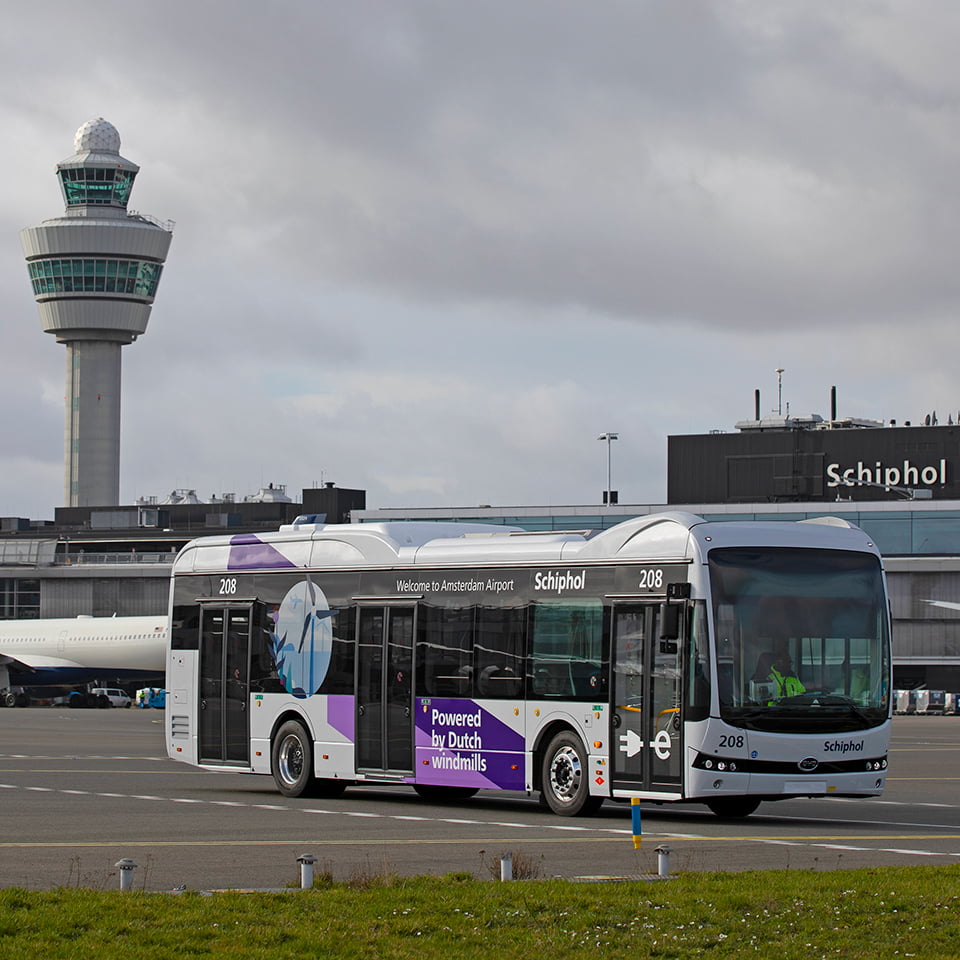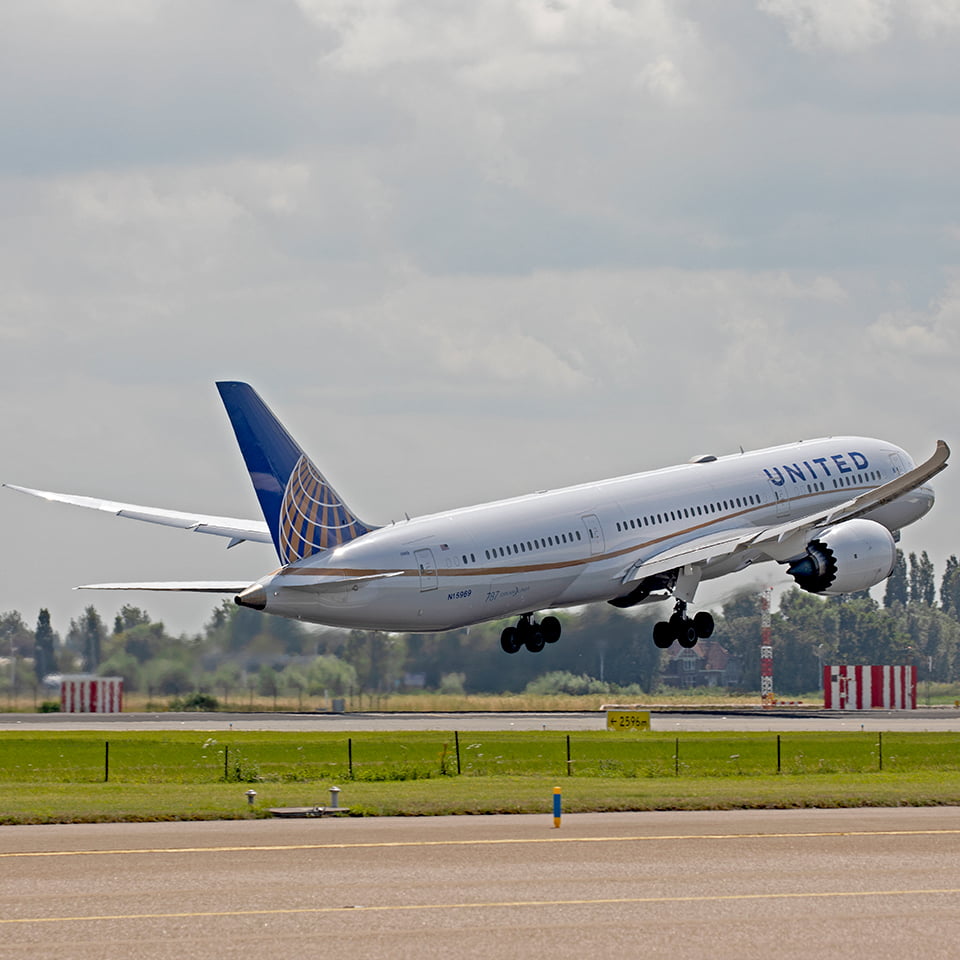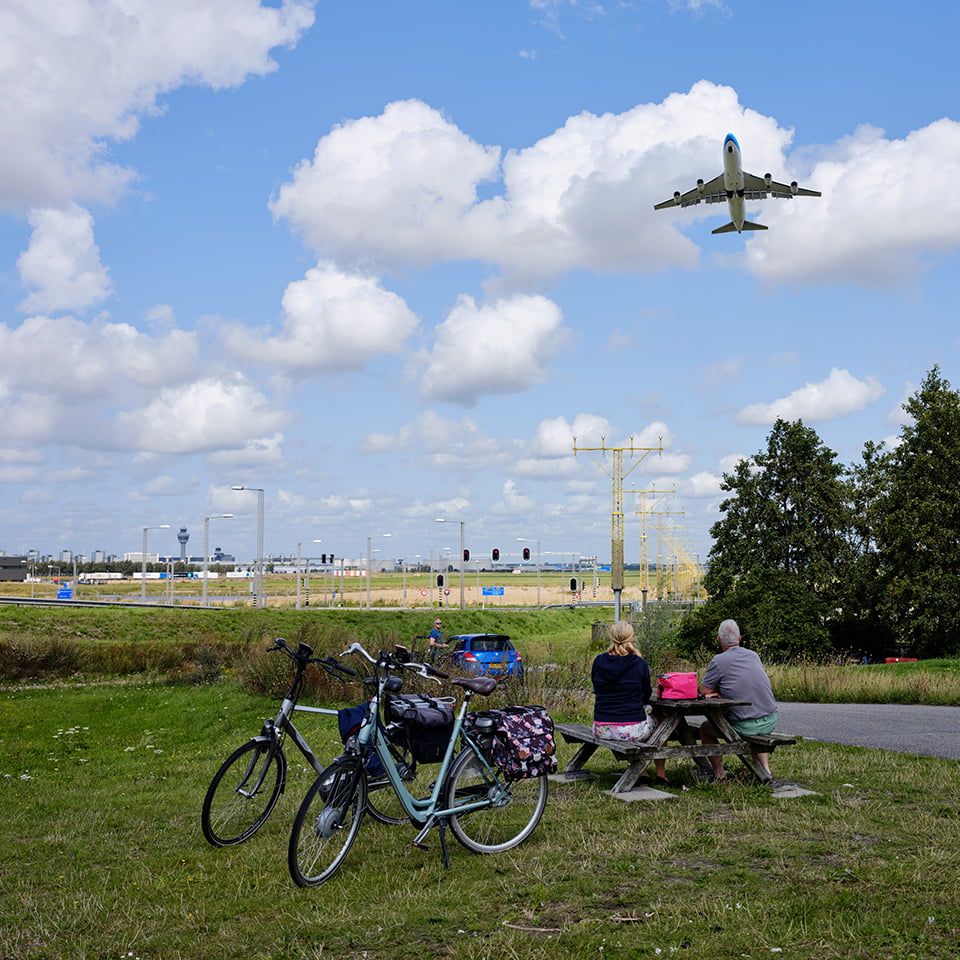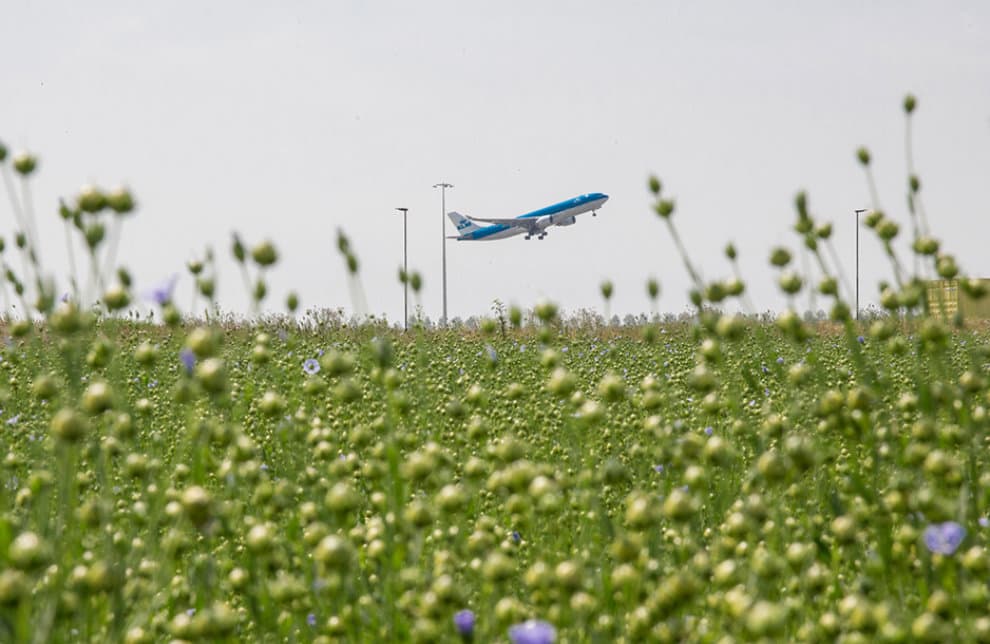
Schiphol believes in flying more efficiently. This means that planes fly more direct routes, therefore reducing CO₂ emissions. Flying more efficiently can be made possible by redesigning European airspace and optimising flight paths.

The Single European Sky (SESAR) project was launched to defragment European airspace. At the moment, each country has its own airspace. The diversity in national air traffic control means that planes often cannot fly in a direct line. As a result, they make large detours and produce more emissions. It is predicted that a single European airspace could lead to a 10% reduction in emissions.
Not all airlines take off according to the Noise Abatement Departure Procedure (NADP2), which means there is room for improvement. This procedure is more efficient, it saves fuel and reduces CO₂ emissions. Air Traffic Control the Netherlands is investigating whether approaching air traffic can start to descend from a higher altitude than what is now the norm. When flights start to descend from a higher altitude, they start the landing procedure further away from Schiphol. This, combined with reduced engine power, reduces emissions.





